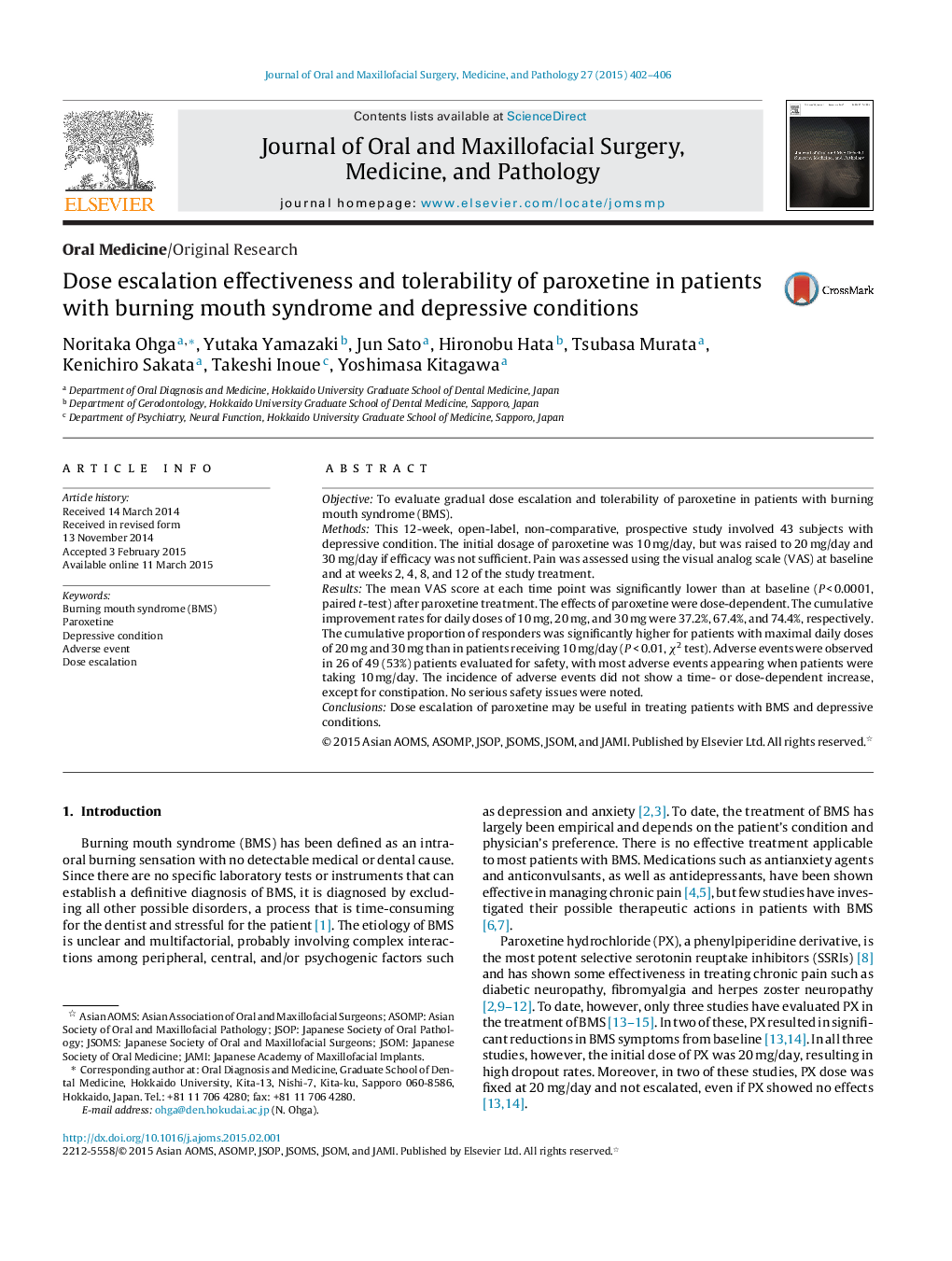| Article ID | Journal | Published Year | Pages | File Type |
|---|---|---|---|---|
| 3160492 | Journal of Oral and Maxillofacial Surgery, Medicine, and Pathology | 2015 | 5 Pages |
ObjectiveTo evaluate gradual dose escalation and tolerability of paroxetine in patients with burning mouth syndrome (BMS).MethodsThis 12-week, open-label, non-comparative, prospective study involved 43 subjects with depressive condition. The initial dosage of paroxetine was 10 mg/day, but was raised to 20 mg/day and 30 mg/day if efficacy was not sufficient. Pain was assessed using the visual analog scale (VAS) at baseline and at weeks 2, 4, 8, and 12 of the study treatment.ResultsThe mean VAS score at each time point was significantly lower than at baseline (P < 0.0001, paired t-test) after paroxetine treatment. The effects of paroxetine were dose-dependent. The cumulative improvement rates for daily doses of 10 mg, 20 mg, and 30 mg were 37.2%, 67.4%, and 74.4%, respectively. The cumulative proportion of responders was significantly higher for patients with maximal daily doses of 20 mg and 30 mg than in patients receiving 10 mg/day (P < 0.01, χ2 test). Adverse events were observed in 26 of 49 (53%) patients evaluated for safety, with most adverse events appearing when patients were taking 10 mg/day. The incidence of adverse events did not show a time- or dose-dependent increase, except for constipation. No serious safety issues were noted.ConclusionsDose escalation of paroxetine may be useful in treating patients with BMS and depressive conditions.
